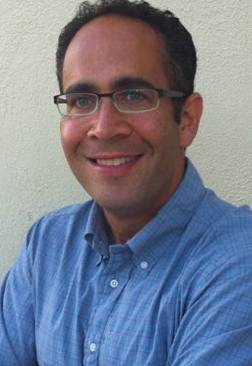By DAVID SHAYWITZ
Consumer health and wellness is experiencing a flurry of activity.
The lab testing company Function (motto: “It’s time to own your health”) acquired Ezra, a whole body MRI company promising “the world’s most advanced longevity scan.”
Oura, maker of the popular smart ring, recently added an integration for continuous glucose measurement as well as the ability to calculate meal nutrition based on a photo. Oura also hired Dr. Ricky Bloomfield as its first Chief Medical Officer; Dr. Bloomfield had previously served as Clinical and Health Informatics Lead at Apple, and is known for his expertise in health data interoperability.
Meanwhile, Oura competitor Whoop, maker of a smart band, just announced the latest versions of its device, with the ability to monitor blood pressure, ECG, and to assess what it describes as a measure of biological age, which it calls “Whoop Age.” Whoop now says it seeks to “unlock human performance and healthspan,” enticing users with the pitch, “Get a complete picture of your health.”
Towards a Personal Health Operating System (OS)
Notice a pattern yet?
What unites these approaches and so many others, as the industry newsletter Fitt Insider (FI) recently observed, is they reflect an attempt to generate a “personal health OS,” intended to “give individuals agency over their well-being,” and more generally, wrest control back from a health system that’s often perceived (especially by young adults) as somewhere between useless and obstructive.
Citing a recent Edelman survey, FI reports,
…nearly half of young adults believe well-informed people can be as knowledgeable as doctors, two-thirds see lived experience as expertise, and 61% view institutions as barriers to care.
Fed up with reactive care, many already collect data across wearables, lifestyle apps, DTC diagnostics, and more, but most are siloed. Rolling up, Function is architecting a unified platform capable of generating clinically relevant insights from raw inputs.
FI points to the proliferation of companies like Bright OS, Gyroscope, and Guava Health focused on “day-to-day data management,” as well as startups like Superpower (“Delivering concierge-level metrics minus the PCP”) and Mito Health (a “pocket-sized AI doctor” that “generates comprehensive digital health profiles by merging labs, medical records, family history, lifestyle info, and more.”)
AI seems poised to play an increasingly central role in many of these companies.
FI speculates,
A step further, end-to-end LLMs could close the loop, linking cause and effect, turning insights into actions, syncing with PCPs, and laying the foundation for an AI-powered medical future.
This is a good time to take a deep breath – as well as a closer, more critical look at this vision of consumer-empowered, data-fortified health.
A Powerful Vision
Unquestionably, there’s a lot to embrace here, including in particular:
The opportunity for individuals to gather more and richer health data from a greater variety of sources, including in particular wearables;
The increased possibility of relevant insights (a key deficiency of early “Quantified Self” efforts) from these data.
The explicit centralization of your health data around you (Superpower’s tagline is “Health Data, In One Place”), a long-promised but often frustratingly elusive healthcare goal in practice. Today, still, (still!), so many patients find themselves having to beg and plead for efficient access to their own health information, data that health systems tend to view as a competitive advantage and aren’t eager to let go.
A tech-enabled approach to health where you have more abundant data about you, that are explicitly in your control, and which could lead to healthier behaviors represents the sort of progress that deserves to be celebrated.
At the same time, when I look at many of these approaches to health, I see two broad categories of concerns.
Concern One: Plural of Fragile Data May Not Be Insight
The first, perhaps more concrete worry, is that, to paraphrase comedian Dennis Miller, “two of [crap] is [crap],” and simply the collection of a lot of data, much of which may be fragile, isn’t sure to translate into brilliant insight, even if the magical power of AI is fervently invoked.
In an especially incisive “Ground Truths” blog post focused on “The business of promoting longevity and healthspan,” Dr. Eric Topol writes that “getting hundreds of biomarker results and imaging tests in an individual greatly increases the likelihood of false-positive results,” a concerning possibility.
I’ve discussed the challenge of false positives here, and get into some of the details around Bayes Theorem (which informs the assessment) here. The OG reference in this space may be this 2006 paper by Zak Kohane and colleagues, in which they introduce the term “incidentalome.”
To be fair, at least some of the proponents of extensive testing recognize the challenge of false positives but feel that the opportunity to collect dense data on individuals over time enables important inflections to be observed, a point Dr. Peter Attia explicitly emphasizes in Outlive; I discuss his “risk-management” mindset here.
Similarly, Nathan Price, a professor at the Buck Institute and the CSO of Thorne, has argued that close inspection (assisted by AI) of rich individual data could identify (for example) opportunities for supplement intervention. These interventions may not make much of a difference on the population level (hence the paucity of persuasive clinical trial data for supplements, as Dr. Topol notes in his latest book, Super Agers – my WSJ review here), but could in selected individuals. (I also discuss Price here, here).
Proponents of the “personal health OS” also might emphasize the presence of tailwinds – the likelihood of improved predictions as measurement technologies continue to get better, denser data become available, and the AI tools become ever-more capable. Perhaps we’re not quite at the point of realizing the future we imagine, advocates might argue, but we’re close enough to start to see what it might look like.
Concern Two: A Constricted View of Health
What’s arguably a deeper concern about the model of health we seem to be moving towards is the degree to which it seems to be informed by a rigidly reductive mindset. In this limited, classically managerial (or consultant) view, health becomes simply metrics on a dashboard, an ever-expanding series of parameters that must constantly be measured, quantified, optimized.
A recent, beautiful essay about our evolving understanding of and approach to happiness in the New York Times Magazine by Kwame Anthony Appiah reminds us what we may be missing.
Around the start of the new Millenium, Appiah writes, we entered
the life-hacking, self-quantifying, habit-stacking era of optimization gurus like Tim Ferriss, whose first book, published in 2007, was “The 4-Hour Workweek” — “a toolkit,” in his words, “for maximizing per-hour output.”
Consequently, Appiah continues, the concept of flourishing was decomposed into “modular upgrades” as we refine our “personal operating system.”
Yet it’s essential to recognize, Appiah writes, that “happiness is not an optimization problem,” but something deeper and more substantial.
I reached for a similar point in 2018, in a piece entitled, “We Are Not a Dashboard.”
Observing that the “dashboard has become a potent symbol of our age,” I wrote that “the ideology of big data has taken on a life of its own, assuming a sense of both inevitability and self-justification.”
I continued, “From measurement in service of people, we increasingly seem to be measuring in service of data, setting up systems and organizations where constant measurement often appears to be an end in itself.”
I’m reminded of a favorite phrase from Kate Crawford’s Atlas of AI (my WSJ review here): “The affordances of the tools become the horizon of truth,” a reminder, in this context, that even if we’re awash in tools enabling the measurement and analysis of health data, we must ensure our understanding of health transcends the limits of these tools.
Of course, the point isn’t to go the other way, and reject metrics completely.
As Professor Jerry Muller, author of the brilliant book Tyranny of Metrics, explains, “I can’t see how competent experts could ignore metrics. The question is their ability to evaluate the significance of the metrics, and to recognize the role of the unmeasured.” (emphasis added).
I also spoke to this need in a 2011 piece entitled “What Silicon Valley Doesn’t Understand About Medicine,” writing, ”a novel technology platform that overlooks the integrated needs of patients or underestimates or fails to account for the complexity and messiness of illness as it actually occurs and is experienced by patients (and those closest to them) will inevitably fall short.”
Moving Forward
To most effectively meet the needs of patients – including the vitally important goal of preventing or preempting disease so people don’t become patients – it’s essential to embrace the power and promise of emerging technologies, including those enabling the conceptualization of “personal health OS,” while not mistaking this map for the territory (as Alfred Korzybski famously instructed).
It will be essential to establish priorities – in partnership with each patient – and identify a handful of key health parameters on which to focus on; Drs. David Blumenthal and J. Michael McGinnis discuss the topic of “core metrics” thoughtfully in this 2015 JAMA “Viewpoint.”
At the same time, we must hold fast to a vision of health and wellness that expands far beyond the confinement of a dashboard and aspires to something beyond the recursive optimization of metrics (as I recently discussed here). Our approach must be capacious enough to include, authentically value, and meaningfully cultivate other components of a healthy, flourishing life, which might include intellectual captivation, the pursuit of purpose, and social engagement with family, friends, and community.
(Martin Seligman’s PERMA model — positive emotion/joy, engagement/flow, relationships/connection with others, meaning/purpose, and accomplishment — represents a potentially useful framework [see here, here] for expanding our thinking.)
Despite the difficulty, if not utter impossibility, of reducing some of the most important and profound components of health to an easily digested number, we must continue to value and pursue them.
Even as we diligently leverage emerging technology to construct and refine health dashboards, let’s resolve to work towards a more expansive, durable, and meaningful vision of health that exists beyond the sterile syntax of rows, columns, and digits.
Dr. Shaywitz, a physician-scientist, is a longtime operator and investor in health tech, the founder of Astounding Healthtech, a lecturer at Harvard Medical School and an adjunct fellow at the American Enterprise Institute. This piece was originally published on the Timmerman Report
Leave a comment





